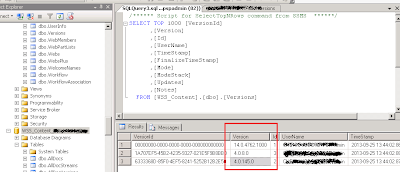Difference between Application Page and Site Pages
Difference between a Site Page and an Application Page
Here we will check what is the difference between a site page and an application page in Sharepoint.
There are two types of pages in SharePoint.
1. Site Pages
2. Application Pages
Common on them: They both inherit their layout from the same master page.
1. Site Pages:
A site page contains text, images, web parts etc and Site pages are stored in the file system. But a end user can create, edit or customized a site page using sharepoint designer or browser. But once an end user modified the site page using SharePoint designer, the template for this page is stored in the content database rather in file system. So every time a user requested the page, the page is retrieved from the content database. At the same time you can also reset to the
original template using designer.
A site page can contain inline server code, but once it becomes customized it can not contain. A site page can also host features such as dynamic Web Parts, and Web Part Zones.
Example of site page is Default.aspx
2. Application Pages:
But Application pages are stored on the file system of the front-end Web server in the %ProgramFiles%\Common Files\Microsoft Shared\web server extensions\14\TEMPLATE\LAYOUTS directory. This folder is mapped to an Internet Information Services (IIS) virtual directory called _layouts.
Application page is complied into a single DLL, that why performance is better than site pages.
These pages are share accross all the sites in the web application.
But an application page can not host features such as dynamic Web Parts, and Web Part Zones.
But if support inline code and also if you want to run custom code then it is better to use application pages.
Example of application page is Settings.aspx

site pages stored in contentdb not in file system
ReplyDeleteya, u r correct. but did you read it fully...i have mentioned your point in my post.
Delete